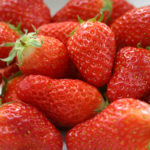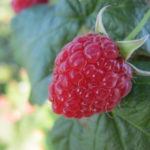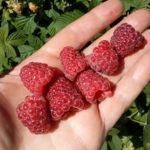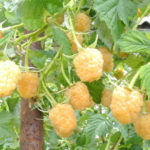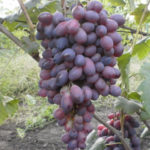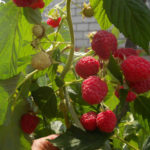Grape variety Count of Monte Cristo
A hybrid form of table grapes called the Count of Monte Cristo began to appear on the plots of amateur winegrowers relatively recently - at the end of the 2000s. Its author, national breeder from Rostov-on-Don - V.U. Kapelyushny, the last decades of his life devoted to the breeding of new varieties of "sunny berries", and, I must say, was so successful in this business that he left an indelible memory of himself in the form of dozens of magnificent hybrids, many of which have won well-deserved popularity among farmers and winegrowers. lovers.
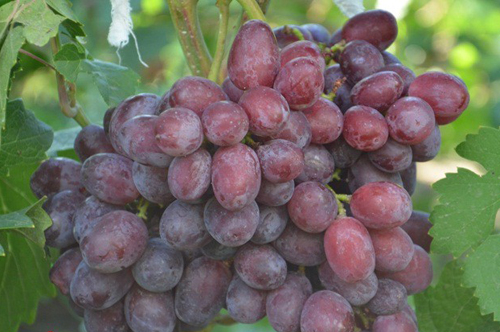
The Count of Monte Cristo is one of these widespread brainchildren of Vasily Ulyanovich. He bred it by crossing two very famous varieties - Mascot, selection of the All-Russian Research Institute of Viticulture and Winemaking, and seedless Rizamat, originally from Central Asia. Both parents of the new variety were distinguished by their large-fruited, and this parameter was fully passed on to their offspring. In addition, our hero inherited from Rizamata a wonderful and eye-pleasing berry color, and from Talisman, relative resistance to fungal diseases and general unpretentiousness in growing.
For a long time, there were various rumors about the alleged similarity of the "Count" with the developments of other amateur breeders, such as the Favor of Viktor Krainov or his Ataman, however, conversations remained conversations, and the hybrid, in spite of everything, continues to grow and delight its owners under its own name.
Agrobiological characteristics
The growth vigor of the grape bushes is high, and their dimensions, provided they are properly cared for, are impressive. The crown of a young shoot is open, slightly pubescent, greenish with noticeable bronze tints in color. Young leaves are wrinkled, they also retain bronze tones. A full-fledged leaf is large, rounded, consists of five lobes, between which there is a strong dissection. Its surface is smooth, dark green with a lighter color of veins, the edges of the lobes are raised. In general, the profile of the leaf blade is wavy or slightly funnel-shaped. The upper lateral incisions are deep, open lyre-shaped with a rounded bottom or closed with an elongated ovoid lumen. The lower notches are usually smaller, can follow the shape of the upper ones, or have parallel sides, while remaining open. The petiolate notch is wide, vaulted, or has the appearance of a lyre. The petioles are longer than the main vein of the leaf, their color is greenish-red. The denticles along the edges of the leaf blade are triangular, medium in size and at the same time sufficiently aligned. Their lateral edges are slightly curved, and the tops are pointed. The type of flower that the variety possesses is bisexual, which allows it to pollinate well in almost any weather, to form perfectly executed brushes, the berries on which are not predisposed to peas. Scattering of buds and ovaries is also not typical for the variety. The annual growth of grapes has time to ripen well before frost, while acquiring a dull brown color.
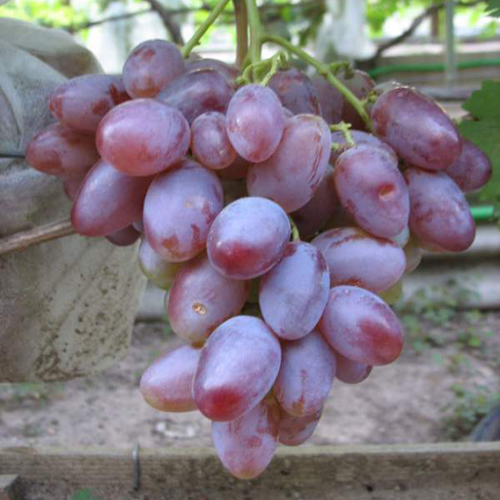
The size of the bunches and grapes of the Count of Monte Cristo is simply amazing. Starting to bear fruit in 2-3 years of life, the plants almost immediately demonstrate their large-fruited, which they continue to increase in subsequent seasons. A typical brush taken from an adult bush weighs from 800 to 1200 grams, and the most prominent ones reach two kilograms in weight. Their structure is medium loose, and the shape is broadly conical. All this splendor is attached to the vine with long, strong, light green comb. The berries of this variety have a gigantic caliber and an attractive oval shape, reaching a length of 36-38 mm and a diameter of 29-31 mm. Their color is no less magnificent - burgundy, upon reaching full ripeness. The surface is covered with an intensive but easily washable layer of a protective wax coating.The average weight of grapes is 25-30 grams. Their pulp is quite dense, fleshy in consistency, has an excellent balanced taste and a pleasant fruity aroma. Freshly squeezed juice is pink in color, its sugar content is 17-19 g / 100 cubic meters. cm, and the titratable acidity is 5-6 g / cubic dm. The skin of the grapes is moderately hard, edible, of medium thickness. The seeds are not too large, light in color, up to three in one berry. The tasting characteristics of the grapes are high.
The harvest is great for fresh consumption. The remarkable presentation and marketability of the variety make it very popular among farmers who cultivate the “sun berry” for sale. According to their testimony, there are never any problems with the implementation of the Count of Monte Cristo, and he does not have time to stay on the counter. Thanks to the early-medium ripening period, our hero manages to get to the market before the influx of traditional cheap varieties begins, which positively affects the price and, ultimately, the profitability of its cultivation. An additional advantage is undoubtedly the excellent transportability, thanks to which the collected bunches can be transported over long distances without degrading their quality. Storage can be carried out in refrigeration chambers or special storage facilities with a controlled microclimate, but this requires that the crop is carefully harvested without erasing the pruin layer, and there are no cracks or other damage on the surface of the berries. In individual farms where grapes are grown for their own consumption, unsuitable bunches for storage can be successfully used as raw materials for home canning. Sweet, aromatic and brightly colored berries convey all these qualities to those compotes, preserves, jams and marinades that are made from them. In winter, tasting these blanks will bring only the most enthusiastic feelings to all members of the winegrower's family.
The growing season of the Count of Monte Cristo is 125-135 days, counting from the moment the eyes open in the spring until the onset of the removable ripeness of the crop. In the south, the first bunches can be cut in mid-August, and mass harvesting takes place in the second half of this month. The sum of active temperatures by this time reaches the order of 2600-2700 ° C, which indicates the possibility of moving the hybrid northward, up to the entire Central Black Earth zone of our country. In some cool seasons, there may still be a little lack of heat for full ripening of the grapes, however, placing the bushes in a wall culture or in the upper part of the southern slopes largely removes this problem. In addition, you need to know about the frost hazard of the local climate. In the case of a regular decrease in the thermometer in winter below the critical for the variety -24 ° C, it must be cultivated with shelter in the cold season.
The productivity of plants is directly dependent on their size, vital energy and the volume of accumulated perennial wood. Yields in young bushes are growing very actively, but care must be taken so that they are not overloaded. The impatience of the grower in the matter of obtaining large volumes of production as soon as possible can play a cruel joke, at best delaying the development of plants, and at worst - weakening them so much that they will be on the verge of death in the winter. Rationing by shoots and harvest must be continued after the start of full-fledged fruiting of grapes. This procedure is carried out in three stages. During spring pruning, the bushes are loaded with 30-35 eyes with moderate shortening of fruit arrows to 6-8 buds. Then, with the beginning of the growing season, barren and weak vines, uselessly consuming moisture and nutrients, are removed.And, finally, before flowering, the inflorescences are thinned out, keeping one for each fruitful shoot.
Ripe bunches try not to overexpose on the bushes, since the Count of Monte Cristo received from his parent Rizamata a tendency to crack berries at the slightest fluctuations in the level of soil moisture, provoked by rain or watering. As a result, all its splendor disappears at the moment, and the grapes become suitable only for processing. The variety shows moderate resistance to fungal diseases, requiring multiple spraying in wet seasons favorable for the development of pathogens.
